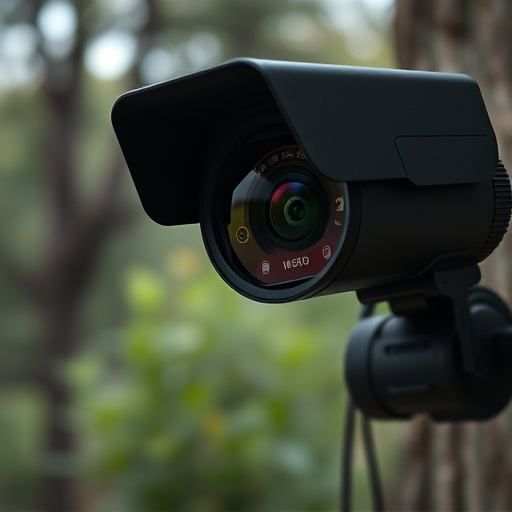Spy Camera Artificial Intelligence (AI) Integration revolutionizes hidden camera detection with advanced RF detector technology and AI algorithms. This blend enhances accuracy, reduces false positives, and adapts to evolving covert filming techniques, ensuring effective surveillance while maintaining discreteness in a tech-driven age. The process involves real-time data analysis, pattern recognition, and dynamic adjustments during scans, making it ideal for diverse environments.
Uncover hidden threats with our comprehensive guide on RF detector sweep hidden camera tutorials. Explore cutting-edge technology, starting with understanding RF detectors and their role in spy camera detection. Discover how AI is revolutionizing this field, enabling efficient real-time sweeps through advanced integration techniques. From basic steps to advanced AI applications, this article equips you with the knowledge needed to navigate the complex landscape of hidden camera detection, ensuring a proactive approach using Spy Camera Artificial Intelligence Integration.
- Understanding RF Detector Technology for Hidden Cameras
- The Rise of AI in Spy Camera Detection
- Integrating AI for Efficient Real-Time Sweeps
- Step-by-Step Guide: Detecting Hidden Cameras
- Advanced Techniques for Artificial Intelligence Integration
Understanding RF Detector Technology for Hidden Cameras
Hidden cameras, often used for surveillance and security purposes, have evolved significantly with the integration of spy camera artificial intelligence (AI) technology. At the heart of this evolution lies the RF (Radio Frequency) detector, a crucial component that enables the detection of these clandestine devices.
RF detector technology leverages radio waves to uncover hidden cameras. By emitting and analyzing specific frequencies, these detectors can detect the signals emitted by hidden cameras, which often operate on dedicated RF bands. The integration of AI further enhances this process by enabling advanced signal processing, pattern recognition, and anomaly detection. AI algorithms can learn to identify typical camera emissions, allowing for more accurate detections and minimizing false positives. This innovative approach ensures that surveillance efforts remain effective and discrete in an era where technology plays a significant role in both the creation and exposure of hidden cameras.
The Rise of AI in Spy Camera Detection
The world of surveillance and spy camera detection has seen a remarkable evolution with the integration of Spy Camera Artificial Intelligence (AI). AI-powered systems are now able to swiftly and accurately identify hidden cameras, revolutionizing privacy protection for individuals and organizations alike. By employing advanced machine learning algorithms, these AI tools can analyze visual data in real time, detecting even subtle signs that traditional methods might miss.
This Spy Camera Artificial Intelligence Integration offers an innovative approach to navigating the challenges posed by increasingly sophisticated and hard-to-detect hidden cameras. With AI, users can now seamlessly integrate powerful detection capabilities into their security measures, ensuring a proactive and effective response against potential privacy breaches.
Integrating AI for Efficient Real-Time Sweeps
Integrating AI into RF detector sweep processes for hidden camera detection offers a revolutionary approach to enhancing efficiency and accuracy in real-time. By leveraging Spy Camera Artificial Intelligence, the system can analyze vast amounts of data swiftly, identifying subtle patterns and anomalies that might otherwise go unnoticed. This advanced technology enables more comprehensive and consistent sweeps, ensuring no hidden cameras escape detection.
AI algorithms can continuously learn and adapt, improving performance over time. They can process multiple signals simultaneously, comparing them against a database of known camera frequencies and signatures. This intelligent approach allows for dynamic adjustments during the sweep, making it particularly effective in diverse environments where traditional methods might struggle.
Step-by-Step Guide: Detecting Hidden Cameras
Step-by-Step Guide: Detecting Hidden Cameras with Spy Camera Artificial Intelligence Integration
1. Preparation: Begin by familiarizing yourself with RF (Radio Frequency) detection technology and its compatibility with AI algorithms. Ensure you have access to a high-quality RF detector that can sweep through various frequencies accurately. Integrate this device with an AI-powered camera system for advanced analysis.
2. Environmental Scan: Use the RF detector to conduct a thorough scan of the area suspected of housing hidden cameras. Start from a distance, sweeping across walls, ceilings, and other potential hiding spots. As you move closer, focus on specific items or areas that exhibit anomalous RF signals. AI integration allows for real-time data analysis, enhancing your chances of identifying hidden camera components.
Advanced Techniques for Artificial Intelligence Integration
As technology advances, integrating artificial intelligence (AI) into spy camera systems opens up a world of possibilities for enhanced security and surveillance. AI can significantly improve detection capabilities by employing machine learning algorithms to analyze vast amounts of data from camera feeds in real-time. This enables the system to automatically identify and flag suspicious activities, such as unusual movements or hidden objects, with remarkable accuracy.
For instance, deep learning models can be trained to recognize patterns indicative of Spy Camera Artificial Intelligence Integration, allowing for more efficient and precise targeting. AI algorithms can also adapt and learn from new data, continuously improving their performance over time. This adaptive nature ensures that the surveillance system remains effective against evolving techniques used in covert filming.
In conclusion, the integration of Spy Camera Artificial Intelligence Integration has revolutionized hidden camera detection, building upon the foundational understanding of RF detector technology. The advancement of AI has brought about more efficient and accurate real-time sweeps, making it easier to identify and mitigate potential privacy risks. By following a step-by-step guide and exploring advanced techniques, professionals can effectively navigate this evolving landscape, ensuring safety and security in today’s digital world.
